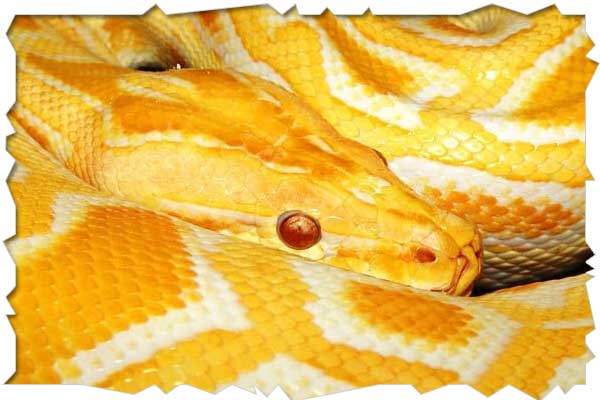|
The Houston Reptiles!
1. BURMEE - Burmese Python
 |
Burmese Python is the largest subspecies of the Indian Python
and one of the 6 largest snakes in the world, native to areas
of Southeast Asia. Often found near water, but
can also be arboreal.
Diet: Carnivore (meat)
Size: 12-19 feet

|
|
| INCLUDED IN ALL SHOWS |
2. ANGEL: Russian Tortoise
 |
The Russian tortoise or Central Asian tortoise is social with humans and therefore a very popular pet. They live a long time, about 50-75 years.
Diet: Omnivore (plants and meat)
Size: 12-18 inches

|
|
| INCLUDED IN ALL SHOWS |
3. WALLY: Ball Python
 |
Ball Python are a nonvenomous python species found in Africa. This is the smallest of the African pythons and curls into a ball when stressed or frightened.
Diet: Carnivore (meat)
Size: 30 inches

|
|
| INCLUDED IN ALL SHOWS |
4. SPIKE: Bearded Dragon
 |
Members of this genus live in the arid, rocky, semi-desert regions
of Australia. They have spiny scales which can be expanded
when threatened and have the chameleon-like ability to change
color in rivalry.
Diet: Omnivore (plants and meat)
Size: 2 feet

|
|
| INCLUDED IN ALL SHOWS |
5. BINGO: Boa Constrictor
 |
This tropical species is properly referred to as "Boa constrictor"; an almost unique animal having the same scientific binomial name shared with Tyrannosaurus Rex.
Diet: Carnivore (meat)
Size: 2 feet (can grow to 6 feet)

|
|
| INCLUDED IN ALL SHOWS |
6. SNUFF - Red Ear Slider
 |
Red-eared sliders are a mostly aquatic turtle and get their name from the small red dash around their ears.It is native to the southern United States and northern Mexico
Diet: Omnivore (plants and meat)
Size: 6-10 inches

|
|
| INCLUDED IN ALL SHOWS |
7. BLUE - Blue-Tongue Skink
 |
Blue-tongues are amazing survivors of urbanization. A lizard
may stay in the same backyard for years, consuming
slugs and snails and sunning itself each morning. They're large
and slow moving with a reputation for stealing dog food.
Diet: Omnivore (plants and meat)
Size: 6-24 inches

|
|
| INCLUDED IN EXPEDITION |
8. MR PIGGY - African Spurred Tortoise
| |
 |
The African Spurred Tortoise is the third
largest species of tortoise in the world and at
200 lbs at full maturity, the largest species
of mainland tortoise.
Diet: Omnivore (plants and meat)
Size: 2-3 feet.

|
|
| INCLUDED IN EXPEDITION |
9. SPOT - Leopard Gecko
 |
The leopard gecko is a crepuscular ground-dwelling lizard naturally found in the deserts of Asia and India. Unlike most geckos, leopard geckos have movable eyelids and it has become a a very popular pet in captivity.
Diet: Insectivores (insects)
Size: 8- 10 inches

|
|
| INCLUDED IN GRAND SAFARI |
10. ROSY - Red Corn Snake
| |
 |
The Red Corn Snake subdues small prey by constriction. Their docile nature, reluctance to bite, and attractive pattern make these North American snakes very popular pets.
Diet: Carnivore (meat)
Size:3 - 6 feet

|
|
| INCLUDED IN GRAND SAFARI |
URI - Uromastyx Lizard
 |
Uromastyx lizards are primarily herbivorous, but occasionally
eat insects. Their habitat spreads over northern Africa to
India and Asia.
Their spiked tail is muscular and heavy, and can be swung at
an attacker with great velocity.
Diet: Herbivorous (plants)
Size: 1-3 feet

|
|
| ALTERNATE |
SCRAPPY - Crested Gecko
 |
The crested gecko has hair-like projections above the eyes, resembling eyelashes. It has a wedge-shaped head and a crest that runs from each eye to the tail. Native to New Caledonia
Diet: Insectivores (insects)
Size: 5 - 8 inches

|
|
| ALTERNATE |
L.A. California Kingsnake
 |
California Kingsnakes use constriction to kill their prey and they will eat other snakes, including venomous type. The "king" in the name (as the king cobra) references its taste for other snakes.
Diet: Carnivore (meat)
Size: 2 - 4 feet

|
|
| ALTERNATE |
LIMBO - Red-footed Tortoise
| |
 |
Known in Brazil as Jabuti and Morrocoy in Venezuela, the Red-footed
Tortoise is popular as
a pet.
This species is protected and may not be exported from its home
country without a permit.
Diet: Omnivore (plants and meat)
Size: 12-18 inches

|
|
| ALTERNATE |
Source: Wikipedia
Reptiles in our programs are subject to substitution when necessary.
ABOUT THE REPTILES
We do not own any dangerous or venomous animals. Most of our reptiles are rescued animals that we adopted very much like pets.

|
































